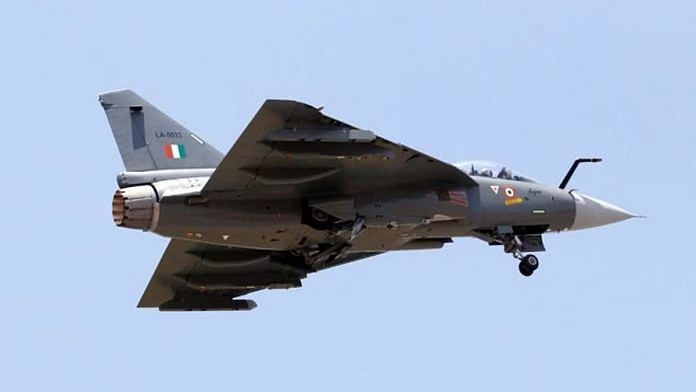The yet another tragic death of two Air Force combat pilots in Rajasthan’s Churu district comes as a cruel reminder that the mastery of the air extracts a cruel price, unexpectedly.
The Jaguar ground attack aircraft was in a two-seater training configuration, and the mishap unfortunately cost the lives of both pilots. This versatile aircraft has flown for five decades and is due for regular updates.
In the long-term, the Jaguar is to be replaced by the indigenous Light Combat Aircraft Tejas. But that project unfortunately has seen delays that could have been avoided with greater preparation.
The Tejas development programme came in for much criticism on account of continued delays. Initiated in the early 1980s and finally flying in early 2000s, the Tejas has the distinction of having the best safety record during development. In all these years, there has only been one known flying accident involving a Tejas. The tragic Jaguar accident on Wednesday was preceded by a report that the inordinate delay in deliveries of the Tejas Mk1A were on account of engine supplies running behind schedule.
Development of an indigenous engine has been a long–running saga of despair and frustration, but it needn’t have been.
India’s R&D
Manufacturing defence systems in India, or anywhere else, is directly proportionate to the research and development efforts into which investments are made. In India, R&D has been a government–run initiative from the earliest times. And it had to be so since a newly independent country did not have a private sector developed to that degree, while it also had an economic model which was state–directed. The Soviet Union also had a similar R&D system since it was an avowedly communist country. The state ran the show, and did remarkably well, both in defence and space.
India also had a head start over Asian countries in terms of R&D in various advanced technologies in the early years. It had by far the most developed atomic energy programme in the region, and also a space effort that has continued to impress and pay dividends globally. The atomic energy programme was just a screwdriver away from progressing to the next essential step of providing a nuclear umbrella, but the anti-bomb lobby held sway until 1998. Had it progressed along the expected path of technological advancement, India could have been a nuclear power before restrictive treaties kicked in.
The same twists of the screwdrivers could have given India a missile capability of intercontinental proportions long before a selective and obstructive international regime delayed India’s progress. The launch capabilities, after all, only had to be tweaked so as to ensure rockets, with or without nuclear warheads, would not go into space, but return to earth on selected targets. The missile development programme subsequently came into being, and has given India a modicum of security cover. It remains a work in progress, as it must. The same should have been the case with defence R&D, but alas, not so.
India flew its first jet combat aircraft in 1961, a mere five years after launching the project.
The HF-24 Marut was then Asia’s first modern jet combat aircraft designed and produced domestically by India, and this was years before China exploded its first atomic weapon. The head start was well and truly a good one, but along the way, something went wrong in long-term vision, a well–rounded threat perception analytical framework, and above all, an implementation process that was just as firm as it was determined. Even as Hindustan Aeronautics promised more than it could deliver, the Air Force didn’t help matters.
Also read: IAF needs a transformation. Bring in 5G fighters, fast-track Tejas Mk2, upgrade AMCA to 6G
An endless cycle
Constantly shifting the goal posts has been an allegation that can be made against the service, and it seems the charge still sticks. Defence equipment is bought on the basis of Staff Quality Requirements issued by the armed forces headquarters, after which the Ministry of Defence begins its search. Starting within, the megalithic domestic defence scientist bureaucracy doubles down to claim ownership of the project. Domestic always sounds best, and sentiment sells, so the project becomes indigenous. The Air Force, in particular, and the Army’s Armoured Corps, generally, prefer equipment that is available off the shelf, which means foreign, so goalposts shift.
The arguments now put out are that ‘it would be foolhardy to assume that the IAF would not revise ASQRs (air staff quality requirements) as the deliveries are delayed and newer, more potent threats emerge…The threat is not static—the ASQR shouldn’t be either’.
So when ASQRs are revised, the project under R&D gets further delayed. And the cycle goes on and on until obsolescence, as was the case with the HF-24 Marut, when the baby and bath water were thrown out together, with its fundamental excellence lost in stored files. Similar cannot be allowed to happen with the Tejas, for lives are at stake.
Manvendra Singh is a BJP leader, Editor-in-Chief of Defence & Security Alert and Chairman, Soldier Welfare Advisory Committee, Rajasthan. He tweets @ManvendraJasol. Views are personal.
(Edited by Aamaan Alam Khan)






